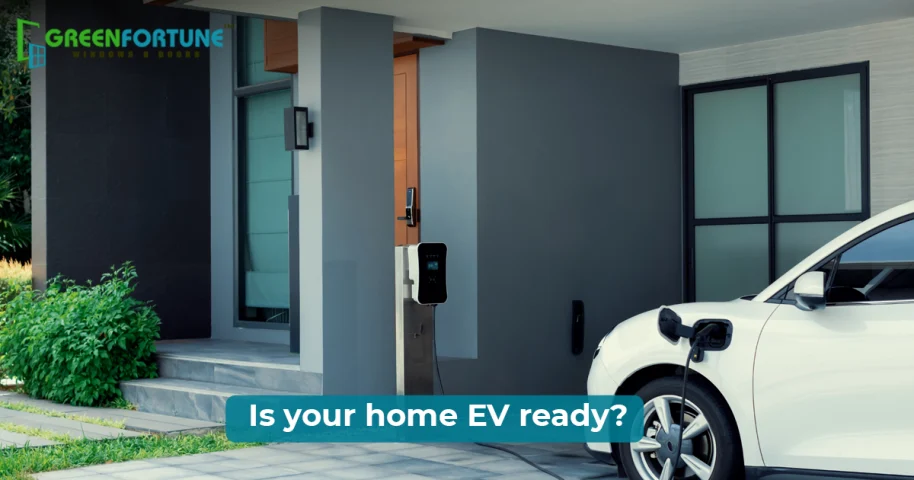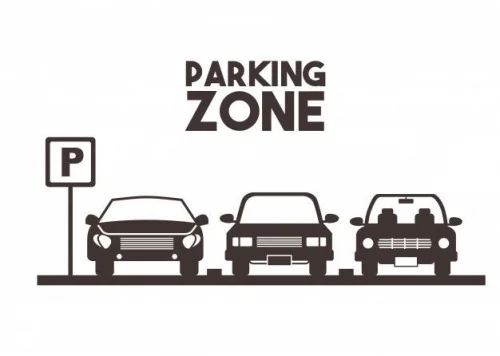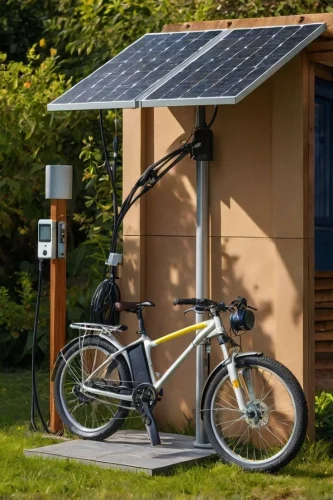
Building Net Zero Energy Homes in India: Cost, Design & Benefits
July 24, 2025
Best Indoor Pet Space Design for Dogs, Cats & More
July 25, 2025I didn’t think I’d be planning for an electric car in 2025. I still remember a time when seeing an EV on the road felt rare. But today? Almost every gated society has at least a few EVs in the parking lot. And sooner or later, most of us are going to need homes that can keep up with that change.
That’s where the idea of EV-ready homes in India comes in. And no — it’s not just for fancy villas or tech parks. Even if you live in a flat or are building a 2BHK in a tier-2 city, it’s smart to get your home ready now. EV adoption is rising fast, and getting your house future-proofed today will save you time, money, and stress tomorrow.
Let’s go step by step and break this down into real things you can do, without the jargon.
Plan the Parking Spot
This is where it all begins. If you don’t have a fixed parking space, the rest doesn’t matter.
Here’s what to do:
- Mark one dedicated spot where the EV can always park (don’t keep switching it around).
- Ideally, this spot should be close to your main electrical panel or the meter room.
- If your home is under construction, inform your architect or builder that you need an EV point — this is now standard in EV-ready house design India plans.
If you live in an apartment, speak to the society management. New RERA guidelines in some states already push for EV charging infrastructure in apartments, so don’t assume they’ll say no.
Check Your Electrical Load
An EV charger isn’t a regular plug point. It pulls serious power. You’ll need to make sure your current connection can handle it.
Steps:
- Contact your local electrician and check the sanctioned load.
- For slow chargers (AC Level 1), 2.5–3.3 kW may be enough.
- For faster charging (AC Level 2), you’ll need 7–11 kW. This means a single-phase or three-phase upgrade might be needed.
If you’re living in an older building, the wiring and load setup will likely need upgrading. This is where most home EV charger installation in India gets stuck — not because of the charger, but the wiring.
Install a Proper Charger
Don’t rely on basic sockets or jugaad-style extension boards.
What you need:
- A wall-mounted charger from a trusted brand (Tata Power EZ, Ather Grid, etc.)
- Waterproof casing if outdoors
- Wiring from the meter to the charger — directly, not piggybacked on a regular circuit
Many Indian EV owners skip this and plug into standard 16A sockets — but it’s not safe or long-term efficient. If you're serious about EV-ready homes in India, get a proper charger setup from the start.
Sort Out the Meter and Billing
One thing many people don’t realise is that charging your EV can shift your electricity usage a lot. So the next smart step for EV-ready homes in India is making sure your metering setup can handle the extra load and track it properly.
If you're in an independent home:
- Ask your DISCOM (power provider) about a separate EV meter.
- Some states (like Delhi and Maharashtra) offer a lower tariff for EV charging through a separate line.
If you're in an apartment:
- Make sure the society meter room can handle the new cabling.
- Some builders now include an individual sub-meter for each EV charger, so it shows up as a separate line on your bill.
This not only helps with load balancing but also makes cost-sharing easier if you're sharing a charger with family or neighbours.
Talk to Your Apartment Society Early
If you're in a flat, this step is important.
You’ll need:
- NOC from the society or builder
- Permission to lay cabling from the meter room to your parking spot
- Access to a power supply (preferably not piggybacked off common area meters)
Here’s the good news: as EV charging infrastructure in apartments becomes common, many societies are now open to the idea. Some even plan a shared charging bay with individual metering for each flat.
In fact, RERA is pushing new projects to have 20–30% of parking spaces made EV-ready by default. So if you’re buying a new flat, ask before signing. Don’t assume it’s included.
Combine Solar with EV Charging
This is where things get exciting. If you're already using rooftop solar — or plan to — you can use that clean power to charge your car.
Here’s how it works:
- You install solar panels (4–6 kW usually enough for daily home + EV use)
- Energy goes into your home during the day
- Leftover power charges your EV or goes back to the grid
- At night, you can either draw from the grid or a battery backup
This setup is becoming popular in cities like Pune, Coimbatore, and Ahmedabad — and it’s a major step toward building EV-ready homes in India that are also net-zero.
Understand the Cost
Let’s be real — it’s not free.
Here’s a simple breakdown of what people are spending in 2025:
Item | Approx Cost (₹) |
EV Charger (AC, 3.3 to 7.2 kW) | 25,000–60,000 |
Wiring, conduit, MCB, labour | 10,000–25,000 |
Meter/sub-meter (if required) | 5,000–10,000 |
Load upgrade (if needed) | 2,000–15,000 (depends) |
Total setup cost: Between ₹40,000 and ₹1 lakh, depending on location and charger type.
Most people recover this within 2–3 years through petrol savings alone.
Final Thoughts
We’re no longer talking about “if” — it’s about when. EVs are becoming the default choice in India, and homes that aren't ready will feel the pinch. Whether you're building new or upgrading an old house, making your space EV-ready is one of the smartest things you can do in 2025.
The cost isn’t massive. The setup doesn’t take months. And the benefits? Cleaner air, lower fuel bills, higher property value, and the satisfaction of being future-ready.
EV-ready homes in India are not a luxury anymore. They're a necessity.
If You’re Future-Proofing Your Home, Don’t Stop At Just Ev Readiness.
TheGreenFortune.com offers high-quality uPVC doors and windows that reduce heat, block UV rays, and bring long-term savings. These windows are perfect for modern Indian homes — durable, energy-efficient, and stylish. They even help lower cooling bills in hot Indian cities.
Explore the full range at TheGreenFortune.com and upgrade your home the smart way.
FAQs
- Can I install an EV charger in a rented apartment in India?
Yes, but you’ll need a No Objection Certificate (NOC) from both your landlord and the housing society. Choose a portable or wall-mounted charger that can be removed later if you move. Make sure the building’s electrical load and wiring can support the charger before installing it. - How long does it take to install a home EV charger in India?
Most installations take 1 to 3 days, depending on the wiring condition, available load, and meter access. If your building is old or lacks direct cabling to the parking spot, it might take longer. Some companies even offer bundled installation with the EV purchase to make the process quicker. - Will making my home EV-ready improve its resale or rental value?
Yes, especially in metro cities where EV adoption is growing fast. Homes with built-in charging access are now seen as future-proof and attract higher interest from buyers and tenants. It’s a small upgrade that makes your property stand out in an evolving real estate market.










